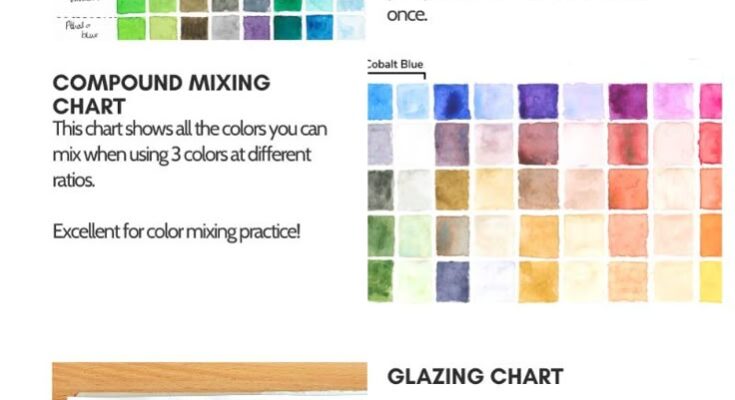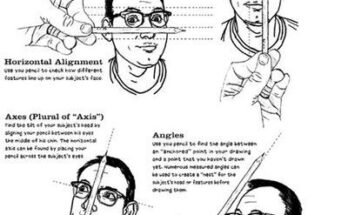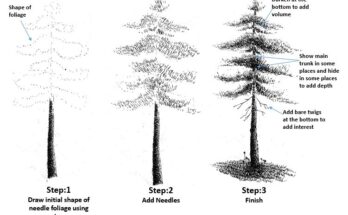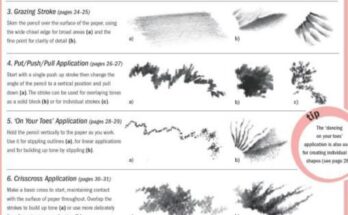7 Watercolor Mixing Charts to Know: A Comprehensive Guide
Unlock the secrets of watercolor mixing with this detailed guide featuring seven essential mixing charts, brought to you by myartaspirations.com. Perfect for artists of all levels, this tutorial showcases three key charts—Traditional Mixing, Compound Mixing, and Glazing—illustrated with vibrant examples to help you master color combinations. Whether you’re a beginner experimenting with your palette or an experienced painter refining your techniques, these charts offer practical insights and creative inspiration for your watercolor journey.

Traditional Watercolor Mixing Chart
The Traditional Mixing Chart is a foundational tool for understanding color interactions:
- Purpose: This chart shows what colors you can create by mixing the colors on your palette with each other at least once.
- Example: The chart features a grid with colors like Lemon Yellow, Alizarin Crimson, and Cobalt Blue, blended to produce a spectrum of hues from soft pastels to rich tones.
- Application: Ideal for exploring primary and secondary color mixes, this chart helps you predict outcomes and expand your palette creatively.
Compound Mixing Chart
The Compound Mixing Chart takes color blending to the next level:
- Purpose: This chart shows all the colors you can mix when using 3 colors at different ratios, excellent for color mixing practice.
- Example: A complex grid displays combinations of multiple hues, such as yellows, reds, and blues, creating a wide range of tertiary colors and subtle variations.
- Application: Perfect for experimenting with triadic color schemes, this chart encourages you to adjust ratios to achieve unique shades, enhancing your mixing skills.
Glazing Chart
The Glazing Chart focuses on layering techniques:
- Purpose: This chart shows what your colors look like when layered on top of each other, offering a great way to learn how to layer colors.
- Example: A grid with colors like Lemon Yellow, Gamboge, and Ultramarine Blue demonstrates how overlapping washes create new depths and tones, from vibrant overlaps to muted blends.
- Application: Use this chart to practice glazing, building translucent layers for rich, luminous effects in your paintings.
Practical Tips for Success
Start with the Traditional Mixing Chart to familiarize yourself with basic combinations, then move to the Compound Mixing Chart to explore complex ratios. Use the Glazing Chart to experiment with layering, applying thin washes and allowing each layer to dry before adding the next. Keep your paper steady, use quality watercolor paper (140 lbs or higher), and mix with clean water to maintain color purity. Record your mixes to build a personal reference library.
Additional Charts and Resources
This guide highlights only three of the seven charts—discover the other four by visiting myartaspirations.com for more details. The “Read More” link directs you to additional resources, ensuring you have access to a complete set of tools to elevate your watercolor skills.
Application and Practice
Gather your watercolor set, 140 lbs paper, brushes, and water cups to begin. Start with the Traditional Chart, mixing two colors at a time, then progress to the Compound Chart with three-color blends. Practice glazing with the provided grid, layering colors to see the effects. Document your results to track your progress.
Posted on July 06, 2025, at 11:00 AM EDT, this tutorial invites you to explore the full range of watercolor mixing charts at myartaspirations.com. Dive into these techniques to unlock a world of color possibilities and enhance your artistic expression!



